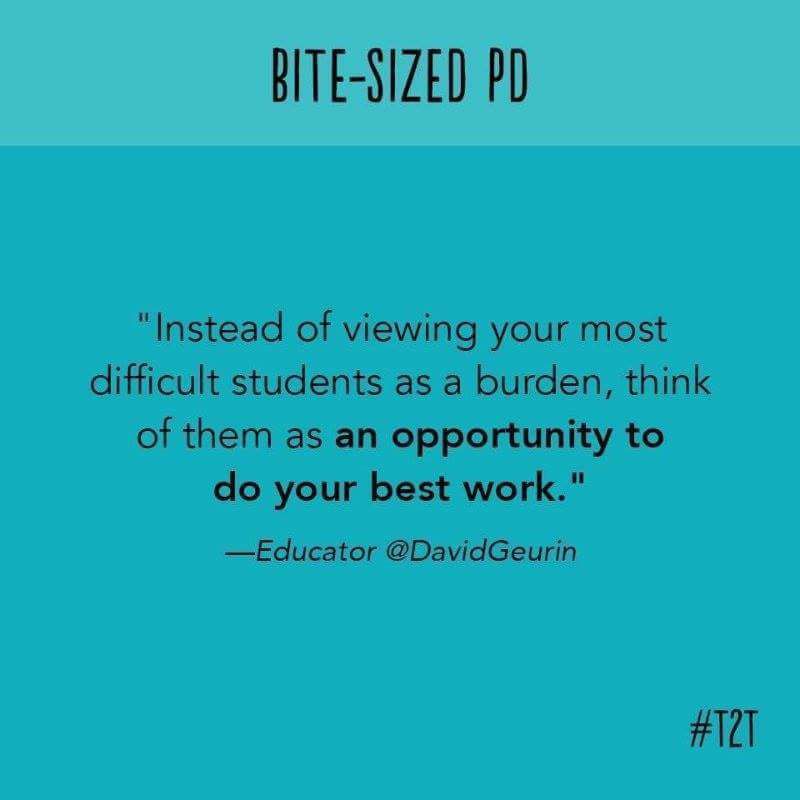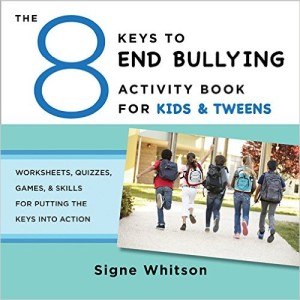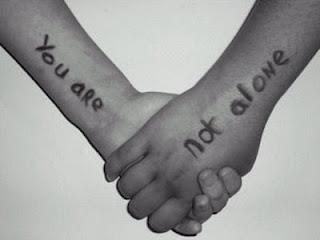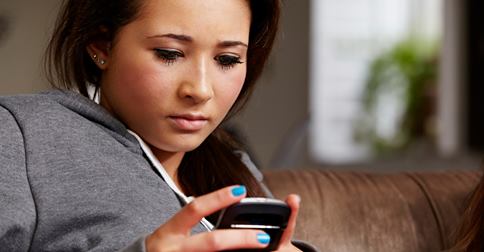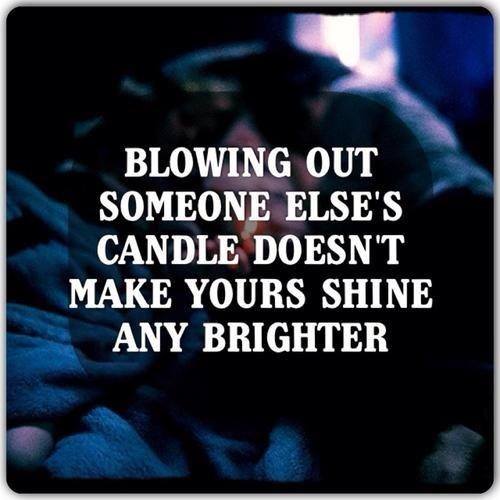Posts tagged bullying in school
How to Stand Up to Gossip and Cruelty
0.
Here’s a great 2-part story, shared with permission by a friend, about her young daughter learning to use her voice to stand up to gossip and cruelty:
So, this is a story that I hope brings a chuckle to you. My youngest daughter, L, deals with and comes home with a lot of girl drama in her class and yesterday began relaying the latest. As she started, I said I didn’t want to hear anything about these girls because it’s a waste of our energy to keep spending time on their issues. While she’s never their target, they triangulate and manipulate for their own purposes and put kids like her in uncomfortable situations. She quickly stopped me, “No, mom, you need to hear how I stood up for myself. Today, _____ started saying something nasty about ____ and I said, ‘stop right there—I am NOT a part of this situation’ and _____ shrugged her shoulders and walked away”.
With that one sentence she stopped hurtful, negative energy in its tracks and sent a very clear message to a master drama queen. And she felt empowered. We applauded her and she ran out of the room with my phone. She returned with the Wonder Woman theme song blaring and dancing, showcasing her strengths as a young girl facing down mean girls and their manipulations. It’s a big thing when a child learns the power of her words, that they alone are weapons against unkindness. Proud mama moment. May we all raise wonder women.
Part 2, 4-days later:
My two cents:
Essential Skills to Stop Bullying
0Not long ago, a national organization that provides mental health services for school-aged children posted an open question for followers on its social media page: You witness a student being bullied; what do you do?
Hundreds of people responded right away. The majority of their answers focused squarely on punishing the child who bullied—most with the type of language that would shock the very children they felt so strongly about protecting. “Shame the bully!” responded one teacher, who boasted that her 22 years of classroom experience validated her answer. “Kick the kid out of school,” demanded a professional counselor.
Ouch.
If social media is a reliable barometer of public opinion, it seems clear that the knee-jerk solution to the problem of bullying is hostility and vengeance. The response is understandable: adults who were bullied during their own youth often feel a strong urge to protect the current generation of young people from the same kind of abuse. Likewise, many adults feel justice is best served when aggressors are punished for their wrongdoing.
Yet the problem with bullying prevention strategies that center on the behavior of kids who bully is that they leave targeted kids in a powerless position, assuming that their lives will only get better if the child who bullies changes his/her ways. In fact, in their landmark study, Davis and Nixon (2010) found that adult actions aimed at changing the behavior of children who bully are actually more likely to make things worse for their victims—not better.
Bullying Prevention strategies that shift their focus to building positive social skills in all young people achieve better results. Read the rest of my post on Psychology Today.
Please share the post with educators, administrators, parents, and caregivers that you believe can benefit from this info.
Fun Activity Helps Kids Tell the Difference Between Bullying and Other Forms of Conflict & Aggression
0In my book, 8 Keys to End Bullying: Strategies for Parents & Schools and in this article featured online in Psychology Today, I make a distinction between behaviors that are rude, behaviors that are mean, and 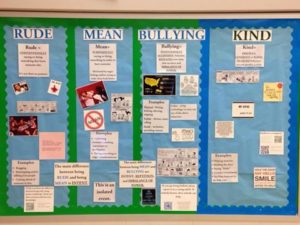 behaviors that are true examples of bullying. I explain why it is critical that parents and professionals are able to discern the differences between these troubling behaviors and explain the risks of lumping all bad behaviors under the bullying umbrella.
behaviors that are true examples of bullying. I explain why it is critical that parents and professionals are able to discern the differences between these troubling behaviors and explain the risks of lumping all bad behaviors under the bullying umbrella.
I created the activity below for educators, counselors. social workers, school psychologists, youth workers and parents to use with kids to help them learn and integrate behavioral definitions of rude, mean, and bullying. Please feel free to use this activity with the young people in your life to teach them about the key distinctions between these three behaviors. (I do ask that you include my name and contact information if you make photocopies of this activity or use it in any type of presentation.
ACTIVITY: Is it Rude, Is it Mean, or Is it Bullying?
After reviewing the distinctions between rude, mean, and bullying behavior (below), read the following scenarios aloud to kids. Challenge kids to move to a designated section in the room if the behavior represents bullying, to a different section if the behavior demonstrates meanness, and to a third section if the behavior is considered rude. Allow kids time to discuss why they chose to stand in a particular section, encouraging personal examples and reflection, as appropriate. An Answer Key is provided to guide your discussion.
DEFINITIONS:
Rude = Accidentally saying or doing something hurtful.
Rude behaviors include:
- Burping in someone’s face
- Butting in line
- Bragging about making a team
Rude behaviors are usually thoughtless and ill-mannered, but not meant to actually hurt someone else.
Mean = Saying or doing something to hurt a person on purpose, once or maybe twice.
The main difference between “rude” and “mean” behavior is that rudeness is usually unplanned. Mean behavior, on the other hand, is done on purpose.
Mean behaviors include:
- Making fun of what someone looks like or what they are wearing
- I don’t like your short hair. You look like a boy.
- Why did you wear that dress?
- Insulting someone’s intelligence or ability
- You’re so stupid.
- You stink at soccer.
- Saying or doing something unkind after a fight with a friend.
- Saying, “I hate you.”
- Taking something that doesn’t belong to you.
Make no mistake; mean behaviors are very hurtful and should be avoided at all times! Still, meanness is different from bullying in important ways that we’ll talk about next.
Bullying = Cruel behavior, done on purpose and repeated over time, that involves an imbalance of power.
To best understand bullying, remember the 3 P’s:
- It is done on Purpose; there is nothing “accidental” or unplanned about bullying
- It is a Pattern; the cruelty happens over and over again
- It is all about Power; the cruel person has more control and influence than his/her target
Kids who bully say or do something purposefully hurtful to others and they keep doing it again and again, with no sense of guilt or shame. Kids who bully have more power than the kids they pick on. This power may come from being older, stronger, or bigger in size or it may come from getting several kids to gang up on one target, to make that target feel hurt and alone.
SCENARIOS:
- Kayla tells MacKenzie that she can’t sit with her on the bus today because she is saving the seat for a girl from her Social Studies class.
- Lucas tells Damien that he can’t play with the Legos because he is the worst builder in the whole first grade.
- Talia makes plans to go to the school dance with her new friend, Gwen. Katie tells Talia that if she hangs out at the dance with Gwen that everyone will think she is a total weirdo and no one will like her anymore. At lunch that day, Katie convinces everyone that it would be a really funny joke to all laugh out loud when Talia approached the lunch table.
- Devin and David are friends. In school, they had an argument. Devin called David a name and David shoved him out of his way.
- Maggie is making fun of the fact that Jessie hangs out with the boys at recess and wears long basketball shorts to school every day. In gym class, Maggie told her to go play on the boys’ team and the day before in homeroom, she wrote the words “You’re so gay” on Jessie’s desk.
- Brady told JP he would beat him up if he touched his cars, then shoved JP out of his way. During math class, he threw a spitball at JP and kicked his chair out from under him. He threatened to punch JP if JP told the teacher.
- Emma and Brit play on the same field hockey team and are normally best friends, but have been in an argument for three days. Emma called Brit a mean name after practice and Brit send Emma a mean text.
ANSWER KEY
- Kayla & MacKenzie: Kayla is being rude, but here is no evidence of intentional meanness, repetitive behavior or a power imbalance.
- Lucas & Damien: Lucas is being mean. It appears that his words are intended to hurt Damien. There is no evidence of repetitive behavior or a power imbalance, however.
- Talia & Katie: Katie is acting like a bully. She has creating an unfair balance of power by getting all of the girls at the lunch table to laugh at Talia. She is also using words like “everyone” and “no one” to threaten Talia about how she will be socially excluded if she does not do what Katie wants her to do.
- Devin & David: Devin and David are engaging in rough play, or rude behavior. This is not bullying because the boys are usually friends, the power balance is relatively equal and the boys are not intending to harm each other.
- Maggie & Jessie: Maggie is acting like a bully. She is making fun of Jessie repeatedly, with intention to cause harm. Slurs based on sexual orientation are particularly cruel for young people and should be taken seriously by adults wishing to create a positive school culture.
- Brady & JP: Brady is acting like a bully. He is engaging in repetitive cruel behavior, designed to hurt JP. He is using intimidation and threats to create a power imbalance.
- Emma & Brit: Emma and Brit are being mean to each other. They are intending to hurt each other with their words and texts. The girls are normally friends, though, and at this point, this appears to be a mutual argument rather than a repetitive pattern of one-sided cruelty.
If you know a young person who would benefit from exploring the distinctions between rude, mean, and bullying and/or who would like to learn skills for managing conflict and bullying check out the 8 Keys to End Bullying Activity Book for Kids & Tweens. This book (and Companion Guide, sold separately or as a set) provides dozens of worksheets, quizzes, activities, puzzles, and skill-building games to teach these concepts and much, much more. Check it out here!
9 Ways Parents Can Support Kids After Bullying and Social Exclusion
0In their younger years, they were inseparable. They begged for playdates, planned out sleepovers, coordinated afterschool activities, and just seemed to find genuine joy in each other’s company. It was a match made in heaven, you observed, and you felt so lucky that your child had found such a positive friendship so early on in life.
Then, things changed. Seemingly overnight. One day, you are cajoling your tween to take a break from her 3-hour texting marathon with her bestie, and the next you notice that her cell phone suddenly sounds like radio silence.
Your daughter is devastated by this abrupt cut-off. You watch as she desperately tries to figure out why her friend has stopped responding to texts and how come none of the kids at her lunch table will talk to her anymore. But she can’t seem to glean any understanding of the cause. She only knows with certainty that nothing is the same.
What can you do for your child when he or she is on the receiving end of a sudden deep freeze from former friends? Read on for 9 strategies parents can use to support their children after bullying and social exclusion:
When Kids Make Mistakes Online: A Story of Social Media Frenemies
0During the elementary school years, most kids are very aware of technology but still quite naïve about all of the hurtful ways in which it can be used. Well into their adolescence even, many kids remain oblivious to the legal consequences of their online actions. This real-life example of innocence-gone-awry by way of technology underscores that one of the most important things adults can do to bring an end to cyberbullying is to teach young kids about the risks of their online behavior and to give them skills to protect themselves from lasting harm.
For the full article, please click here or paste this link into your browser: http://www.huffingtonpost.com/signe-whitson/what-happens-when-kids-ma_b_5953026.html
Using 8 Keys to End Bullying in a School Setting
0
This week, as part of a graduate course assignment following the completion of my 2-day Managing Conflict in Schools course, an Education professional submitted this personal reflection paper on how the concepts from 8 Keys to End Bullying: Strategies for Parents & Schools can be applied in his work setting. The student was kind enough to agree to allow me to share his writing with you:
Personal Reflection – 8 Keys to End Bullying: Strategies for Parents & Schools (2014)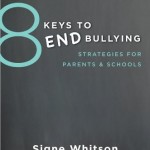
Blair Raugust
Augustana College
June 2014
Bullying. An issue that gains constant attention in society, the media, and most importantly for myself; schools. I have been in the education field for the past four years and over this time have witnessed accounts of bullying within the school environment. I wish that I could say that my undergraduate degree properly equipped me with the skills and tools that I would need to effectively intervene; however, in my experience I feel it was left out of my university education. It is a terrible feeling as a teacher when you witness bullying in your school, or know that it is happening, and you are not confident in your abilities to effectively address the situation. I was thrilled when I was able to attend a two day seminar in Victoria B.C. hosted by Signe Whitson titled: Managing Conflict in Schools: Practical Strategies to Stop Bullying and Help Kids Handle Anger Effectively. I found the two day course provided practical, effective solutions that I would be able to incorporate into my teaching when I returned to work on the following Monday. Furthermore, I was provided with a copy of a book written by Whitson titled: 8 Keys to End Bullying: Strategies for Parents and Schools (2014). This paper is a personal reflection on the book with the focus being on specific strategies and applications that I found useful and how I plan to use them in my class room and school.
I recently obtained a graduate degree in Education Leadership and School Improvement from the University of Alberta. A theme throughout the two year program was the necessity of establishing positive relationships with teachers, parents, administrators, and students. The importance of relationships was also highlighted by Whitson as an instrumental contributor to effectively end bullying. I found the three points that Whitson gave on why strong relationships with teachers are important to have a great impact on me. Whitson’s three points are: 1) Kids who bully act without the hindrance of disapproval by a grown-up that matters to them, 2) Kids who are victimized feel isolated from sources of support and intervention, 3) Kids who witness bullying have no one to turn to and report what they have seen. I feel that these connections are even more important when Whitson reports that bullying most often happens when no teachers or adults are present. I believe that students need to know that there are adults around them that will provide support. I found it refreshing when Whitson pointed out that sometimes the solutions that adults provide don’t need to be groundbreaking. We may not always have the answers or be able to rectify a situation immediately. Often a simple comment such as, “I am really sorry that this is happening to you” can provide some much needed relief to students. Whitson makes it clear that, “Teachers play a pivotal role in a schools effort’s to bring an end to bullying” (p. 55). School leaders and educators cannot hold the opinion that addressing bullying is not part of my job description or use the excuse, “if it did not happen in my class, it is not my problem”.
In the book Whitson argues that in order to stop bullying students need to be taught how to properly respond to it. Prior to reading the book, my first reaction when I witnessed a student being bullied was to discipline the child who was bullying; however I quickly learned this was the wrong approach. Whitson acknowledges in the introduction to Key 5, that a common approach among adults is to directly punish the aggressor. Davis and Nixon (2010) found that adult actions aimed at changing the behavior if children who bully are actually more likely to make things worse for their victims – not better (as cited in Whitson, 2013). Whitson urges teachers to help students develop important social and emotional competencies. Whitson points out the effective social and emotional learning (SEL) programming, “Drives important social outcomes such as positive peer relationships, higher levels of caring and empathy, increased social engagement, and reduction in problem behaviors such as bullying” (p. 97). Whitson proposes five components of a bully prevention SEL program: 1) Emotional Management – learning to manage strong feelings in constructive ways, 2) Empathy – the ability to understand how another person is feeling in a particular situation, 3) Problem solving and Conflict Resolution – teach students how to manage life’s inevitable conflicts in independent and respectful ways. 4) Assertiveness – being able to communicate in a verbal, non-blaming, respectful way, 5) Friendship building – being able to establish and maintain positive friendships. I found this section to be very important for teachers to realize and as Whitson points out, it’s important to teach these skills in the early years of formal schooling. Although teaching SEL is not part of the curriculum, I feel it is part of our duty to help young people develop these skills before they enter adult life. “Integrating SEL into the standard school curricula, from the earliest years through high school graduation, is a proven way to fortify kids with the skills they need to cope with bullying and to thrive in all of their interpersonal interactions (p. 120).
I mentioned earlier that I was appreciative of the “ready to use” strategies that are include through the book. Whitson includes specific activities that teachers can use with their students to help them understand bullying. Often times when attending professional development opportunities and reading books on educating young people, I have found that there are great ideas for teachers but they often lack to practical application aspect; Whitson managed to affective address this issue throughout the book. Furthermore this book is not only indented to reach out to teachers but also is intended for: parents, administrators, youth workers, and counselors. There is sound advice and strategies for all people who are invested in improving the emotional well-being of children.
References
Whitson, S. (2014). 8 keys to end bullying: Strategies for parents & schools. New York, NY: W.W. Norton & Company, Inc.
Psychology Today Post: What Will it Take to Stop Bullying?
0
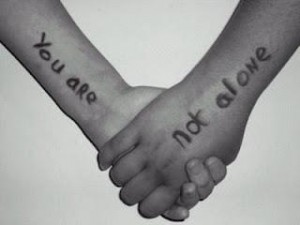 As a school counselor and educator on the topic of Bullying Prevention, I get to do a lot of reading, thinking, and talking on the subject of unwanted aggression in schools, families, and communities. More importantly, I aim to do a lot of listening to the teachers, parents and students who make up my audiences, for these are the people from whom I gain the most profound insights about the cruelty of bullying as well as the resilience of the human spirit.
As a school counselor and educator on the topic of Bullying Prevention, I get to do a lot of reading, thinking, and talking on the subject of unwanted aggression in schools, families, and communities. More importantly, I aim to do a lot of listening to the teachers, parents and students who make up my audiences, for these are the people from whom I gain the most profound insights about the cruelty of bullying as well as the resilience of the human spirit.
Recently, a mother described to me the very emotional account of her son’s experiences with bullying throughout middle and high school. I was instantly moved to tears at her son’s painful experiences, shocked at the bland responses of too many adults who failed him, grateful for the nurturing care that finally came his way in school and amazed by the strength of his mother who was a warrior on his behalf.
Although this mother did not originally intend for her story to travel past my ears, I asked her for her permission to share it (with identifying details changed) because it is an important story of hope and perseverance and because while I know that her journey is all-too-common, I also know that families traveling down this road often feel as if they are completely on their own. She and her son agreed to let their story be told as a way to help others understand that they are not alone and to educate helping adults on how to effectively reach out to kids–and how to never, ever downplay a report of bullying.
Here it is, with profound thanks to one very brave mother and child for allowing their story to be shared:
Library Journal Posts Its Review of 8 Keys to End Bullying
0Check out the Library Journal’s review of my newest book, 8 Keys to End Bullying: Strategies for Parents & Schools:
8 Keys to End Bullying will be released at the end of this month. For more information, please click here or find it on amazon.com!
Ending Bullying Begins with Building School Culture
0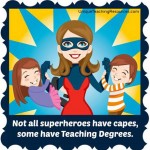 In my conversations with educators and school administrators about both the struggles and the successes they’ve had with regard to bullying and bullying prevention, one common theme emerges: it’s all about the culture of the classroom.
In my conversations with educators and school administrators about both the struggles and the successes they’ve had with regard to bullying and bullying prevention, one common theme emerges: it’s all about the culture of the classroom.
This article, posted this week in Psychology Today, shares specific and practical strategies teachers use to create classroom cultures in which kindness is valued over coolness and popularity among students is based not on the power to dominate social interactions but rather on a young person’s willingness to reach out to a classmate with compassion.

